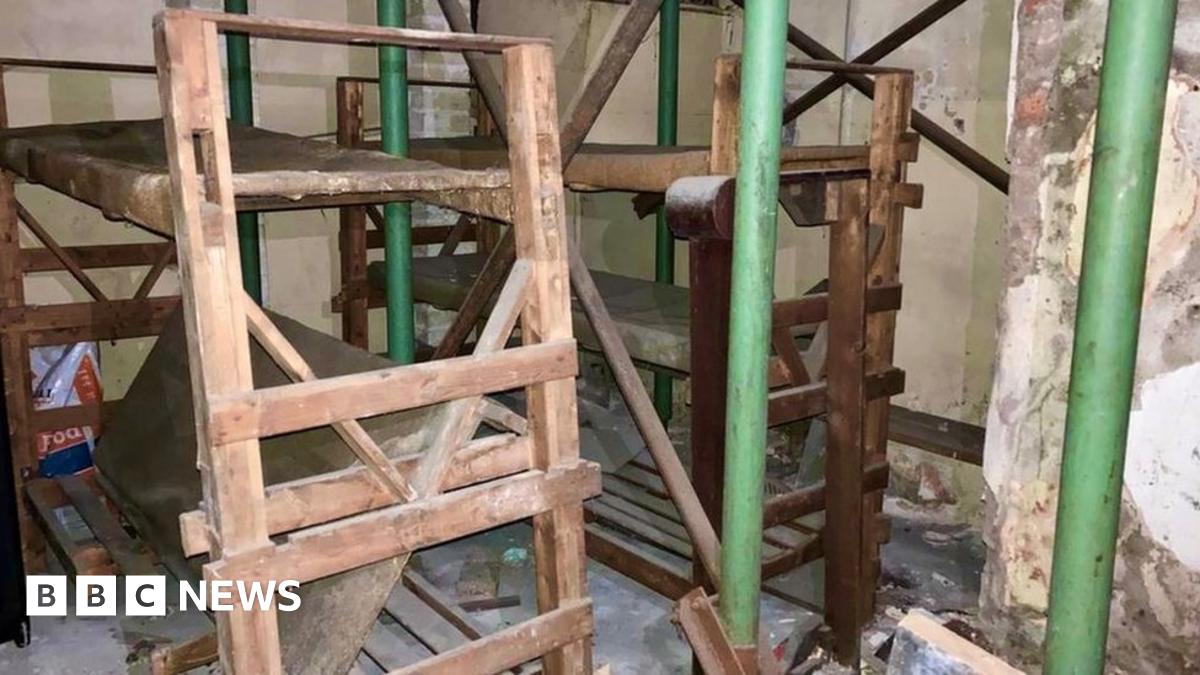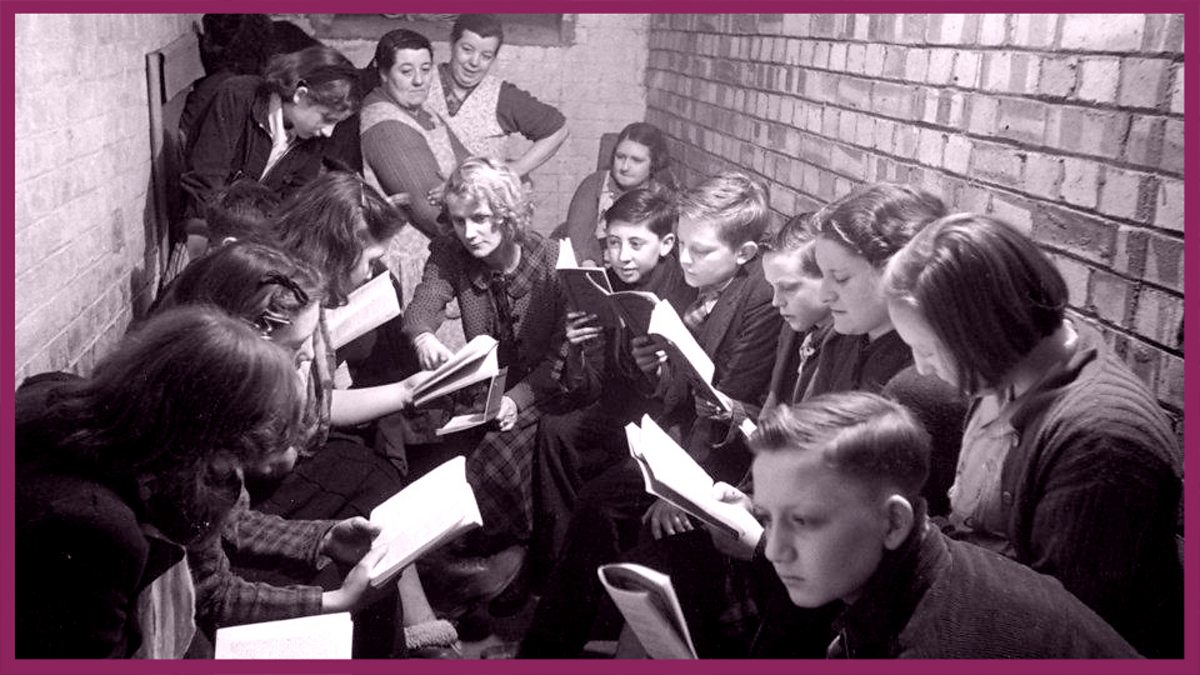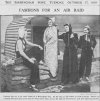-
Welcome to this forum . We are a worldwide group with a common interest in Birmingham and its history. While here, please follow a few simple rules. We ask that you respect other members, thank those who have helped you and please keep your contributions on-topic with the thread.
We do hope you enjoy your visit. BHF Admin Team
You are using an out of date browser. It may not display this or other websites correctly.
You should upgrade or use an alternative browser.
You should upgrade or use an alternative browser.
Air raid shelters
- Thread starter Peter Walker
- Start date
Re. Post #480, there’s always someone who’ll cut corners to make a few extra quid. Appalling if it did result in unnecessary fatalities. Viv.
i know this is an old post but today i managed to get some photos of this underground air raid shelter including some shots of the inside of it made possible due to some of concrete that was missing from one end..the other end shows the entrance door...cant believe its still there..amazing...will get the photos on asapThis doesn't suprise me. The government always knows best.
robb128 shelters in Co op car park Wylde Green. Around here Robb?
View attachment 119071
lyn
wont be long mort...just sorting out the best of the lot...keep yer head downLooking forward to these Lyn
right folks i think these are the best of the lot...the shelter which is in the car park behind the co op wylde green is very long and covered in ivy now..please excuse the fingers showing in the shots taken of the inside as it was very difficult getting the camera in the gap at the right angle..looks to be modern rubbish in there but unless the roof comes off who knows what ww2 relics could be hidden..note the corrugated sides inside the shelter..fascinating it of history..if anyone wants to post these photos on any other internet site as always i have no objection at all but i would ask that you credit the birmingham history forum...thanks
lyn
pic 1 the length of the shelter overgrown roof with ivy
pics 2.3 and 4 entrance bricked up
pic 5 is the end of the shelter with some concrete broken off this is where the camera went in
pics 6.7 and 8 the inside of the shelter
.







lyn
pic 1 the length of the shelter overgrown roof with ivy
pics 2.3 and 4 entrance bricked up
pic 5 is the end of the shelter with some concrete broken off this is where the camera went in
pics 6.7 and 8 the inside of the shelter
.








Last edited:
hi mort go to my post 484 where i quoted garys post which is 10 years old...the location is given but i will edit my post giving the location...glad you liked the photos i must admit it was great to get out again taking photos of historical interest
lyn
lyn
Last edited:
A Sparks
master brummie
Not Birmingham but I thought this was interesting!

 www.bbc.co.uk
www.bbc.co.uk

WWII air raid shelter found in Edinburgh during cupboard clean
Residents found bunk beds, wartime signage and a reinforced roof in a room under their Edinburgh flats.
Very unusual. Makes you wonder if anything similar is still around in old cellars etc. Viv.
DavidGrain
master brummie
Have just been watching an old film about the history of Davenports Brewery
It covers the story of the time in WWII showing the practice evacuations to the air raid shelter. It said that 4-500 people sheltered there at night and that there was a first aid post open day and night staffed by Davenport employees.
I wondered that too as the film seemed to cut out just as it was giving details of the shelter.
All the same David interesting film about Davenports. Viv.
All the same David interesting film about Davenports. Viv.
DavidGrain
master brummie
Yes there is a part 2 but very difficult to find. I have not watched that yet but I thought it would be easy to find as I was offered it immediately after watching the first part.
If you go to http://www.davenports.co.uk/about-us/vintage-tv-ads/
you will find several of the old cinema/TV ads and click on Davenports Beer Story 2. I see we have a Davenports Brewery thread so I shall post the link there as well.
If you go to http://www.davenports.co.uk/about-us/vintage-tv-ads/
you will find several of the old cinema/TV ads and click on Davenports Beer Story 2. I see we have a Davenports Brewery thread so I shall post the link there as well.
patricia NASH
knowlegable brummie
we lived near the BSA factory armoury road, my family used the crypt , the church at the corner of walford road , one night a bomb fell opposite and demolished a row of houses plus set the gas main alight my mother said it was like daylight , you could see the BSA the next night they chose bomb shelter under burtons stratford rdPRIME TARGET
My Dad also told me that they used to stockpile ammunition under the Villa stand. There was the army 'base' at the back of the Villa, entrance off Witton Road, later used by Post office telephones.
What with I.C.I turning out bombs as well, I think it was a very dodgy area to live regarding bombing raids.
oldMohawk
gone but not forgotten
In ww2 I had a one piece zip-fastened 'siren-suit' somewhat like the lady on the right. My Mom made it from an old blanket. We used to put them on after tea as the sirens sounded and go up for a night in the shelter. If it was an all-night raid I can remember walking back down the garden as the dawn was breaking and the birds were singing ... 
ChrisM
Gone but not forgotten R.I.P
Apologies for nit-picking, but in fact I don't think there were any difficulties or restrictions with regard to clothing at that early stage (apart from financial resources, of course). The initial threat of wholesale bombing had not been realised, the Phoney War had started, in Germany for some time there had been rationing, but here, I don't think that life had yet changed much at all from peacetime. This was probably a bit of the "Isn't life fun, girls/let's all keep cheerful despite our worries" type of journalism.
The picture does make you wonder, though, what people were planning to do with regard to clothing when they had to resort to shelters which remained at that moment a distinct, future possibilty.
I have been trying to remember my parents' clothing at the moments when they stood, with me in their arms wrapped in blankets, at the french doors at the back of our house. Dad and my elder brother, if they weren't on Home Guard duty elsewhere, would be dressed for their outdoors vigil, Mum and my sister in whatever they were going to spend the night in as they dozed in their bunk beds made out of rough timber and chicken wire netting. Dress probably depended on whether it was summer or winter. As you looked up, the sky always seemed to be pitch black but studded with stars, whilst a bright moon cast eerie shadows in the garden. When it was quiet overhead Dad would say "OK" and we would rush down the garden and descend the steps into our sanctuary where I would be deposited in a large orange box wedged between two walls. And rapidly get back to sleep. Mum and my sister would snuggle down too, under blankets. But I remember no boiler suits or anything similar which might have been rather sensible. And certainly nothing like some of the fanciful stuff in the Mail. Just ordinary clothing and probably plenty of layers of it!
Chris
The picture does make you wonder, though, what people were planning to do with regard to clothing when they had to resort to shelters which remained at that moment a distinct, future possibilty.
I have been trying to remember my parents' clothing at the moments when they stood, with me in their arms wrapped in blankets, at the french doors at the back of our house. Dad and my elder brother, if they weren't on Home Guard duty elsewhere, would be dressed for their outdoors vigil, Mum and my sister in whatever they were going to spend the night in as they dozed in their bunk beds made out of rough timber and chicken wire netting. Dress probably depended on whether it was summer or winter. As you looked up, the sky always seemed to be pitch black but studded with stars, whilst a bright moon cast eerie shadows in the garden. When it was quiet overhead Dad would say "OK" and we would rush down the garden and descend the steps into our sanctuary where I would be deposited in a large orange box wedged between two walls. And rapidly get back to sleep. Mum and my sister would snuggle down too, under blankets. But I remember no boiler suits or anything similar which might have been rather sensible. And certainly nothing like some of the fanciful stuff in the Mail. Just ordinary clothing and probably plenty of layers of it!
Chris
PatHayward
master brummie
I remember my cousin and myself having coats made out of army blankets by a neighbour in Formans Rd who was a dressmaker- they were very heavy and warm.
PatHayward
master brummie
Sweaters were undone and re-knitted and lots of clothes were hand-me-downs or refashioned. Toes were cut out of sandals to last another season and tips were nailed on to the soles of shoes to make them last longer.
oldMohawk
gone but not forgotten
I was only 5 or 6 years old at the time and remember we got only one warning of a raid which usually gave about 10/20 minutes before we could hear the bombers. The warning was a rise and fall sound, the all clear was continuous.
They can be heard here click the top pic for the warning sound ,,, brings back memories when I hear them ...

 www.bbc.co.uk
edit addition
www.bbc.co.uk
edit addition
Thinking back I can remember one day when the warning sounded just as I got home from school so had to rush my tea before the rush up to the garden shelter. It was an all night raid and the all-clear only sounded about 5.30am next morning so it was a quick breakfast before off to school ...
They can be heard here click the top pic for the warning sound ,,, brings back memories when I hear them ...

Primary History KS2: WW2 Clips. An air-raid siren sounds the warning
WW2 Clips. The authentic sound of a WW2 air raid siren sounding the warning. BBC School Radio. BBC Teach.
Thinking back I can remember one day when the warning sounded just as I got home from school so had to rush my tea before the rush up to the garden shelter. It was an all night raid and the all-clear only sounded about 5.30am next morning so it was a quick breakfast before off to school ...
Last edited:
RobinCanada
knowlegable brummie
I can remember when I was almost 4 kneeling on a chair in the front room watching the bombers both going to Germany and returning at the same time on 'the thousand bombers a night' raids. Castle Bromwich had twin runways, one used for take-off and the other for landing. According to my Mum, I used to hide when I heard the air raid sirens go off.
Interesting fact that came out after the war Fort Dunlop was just across the road from Castle Bromich air field Dunlop was never hit by a bomb. Dunlop owned vast rubber plantations on the other side of the world and Germany was purchasing rubber from middlemen in order to use for their tyres. I took a look at the BBC video KS2 and people are getting their knickers in a twist about virtual learning at home, much more comfort at home than in a bomb shelter.
I was in the Boy Scouts and we had then Bob-A-Job and can remember two of us being paid a pound each to take down an Anderson shelter from a back garden on Antrobus Rd Boldmere. in 1953.
Stay safe
Robin
Interesting fact that came out after the war Fort Dunlop was just across the road from Castle Bromich air field Dunlop was never hit by a bomb. Dunlop owned vast rubber plantations on the other side of the world and Germany was purchasing rubber from middlemen in order to use for their tyres. I took a look at the BBC video KS2 and people are getting their knickers in a twist about virtual learning at home, much more comfort at home than in a bomb shelter.
I was in the Boy Scouts and we had then Bob-A-Job and can remember two of us being paid a pound each to take down an Anderson shelter from a back garden on Antrobus Rd Boldmere. in 1953.
Stay safe
Robin
PatHayward
master brummie
I don't recall anything but the wail of the warning siren, up and down, up and down, and then eventually, sooner or later, the steady note of the "All Clear" (accompanied in my memory with a sense of relief).
Chris
PatHayward
master brummie
Even after all these years my heart jumps whenever I hear the sound of sirens.
That feeling has never gone away - even just thinking about them is upsetting.
That feeling has never gone away - even just thinking about them is upsetting.



